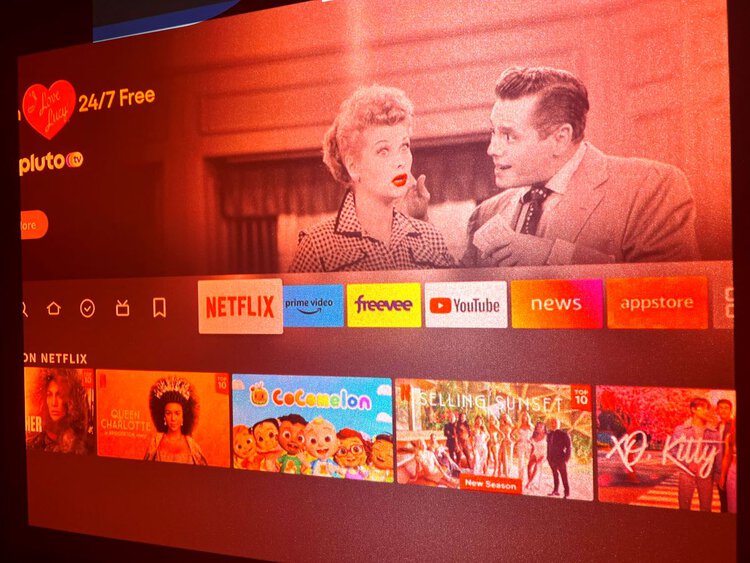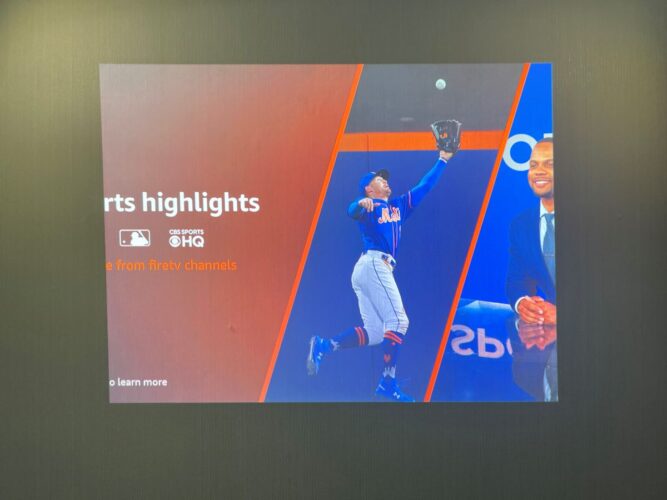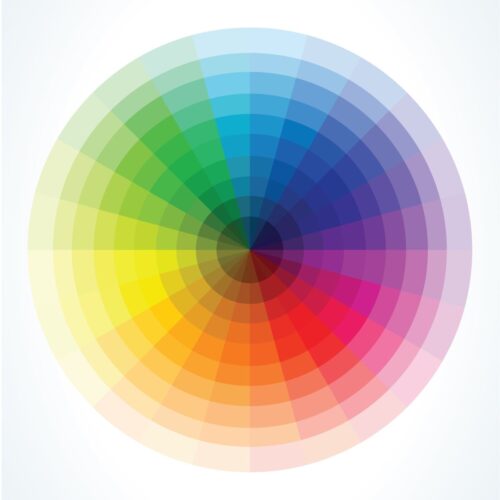Projector on Colored Wall, Explained (Blue, Green, Beige & More)

What To Know
- Projecting onto a colored wall is feasible, but the wall’s color affects the reflectivity, gain, and contrast of the projection.
- White, black, and gray walls offer the most consistent projection results, while other colors may emphasize their own tones or absorb opposing colors.
- The projection quality is influenced by multiple factors, including ambient light, screen gain, and projector specifications, making a holistic approach essential for optimal viewing.
While the idea of projecting onto a colored wall may seem unconventional, it opens up a world of creative potential. In this guide, we’ll shed light on how different colors can impact your projection experience.
So, whichever color your wall boasts, get ready to join us on a journey through the vibrant spectrum as we explore how different colored walls can transform your projection setup and unveil the hidden potential of your walls.
Quick Navigation
Will a Projector Work on a Colored Wall?
Yes, it is possible to project on any colored wall.
However, the reflectivity and gain of each color varies. Some colors absorb more light than others and create different levels of contrast. It is important to note that nothing absorbs 100% of light, except for black holes.
Therefore, every colored wall reflects light to some extent, and it is crucial to have a comprehensive understanding of those factors that affect the projection process before choosing the right projector.
That’s why before delving into specific colors, I suggest skimming our article Projector Screen Gain: 5 Decisive Factors to understand the concept of screen gain. This will make it easier to follow the information provided below.
Using a Projector on a White Wall (Bright-Colored)

White walls have the highest gain as they can clearly reflect any color of light.
This is because white is a combination of all colors, which can be observed by using an optical prism to separate white light into different colored lights.
However, in a room with high ambient light, white walls also absorb and reflect it in addition to the projector’s light.
Also, due to its higher gain, the viewing cone created when projecting onto a white wall is narrower compared to low-gain colors.
Nevertheless, when sitting within the viewing angle, the light reflected from the projector on a white wall is still greater than that from the other light sources, enhancing its ability to combat a high ambient light environment.
It’s important to note that each white wall has a different gain level influenced by various factors such as its materials (drywall, concrete), its tone, etc.
Using a Projector on a Black Wall (Dark-Colored)
In contrast to white, black is the absence of color, resulting in the highest absorbability of light and the lowest gain.
Black walls can be ideal for creating a cinematic experience in low ambient light conditions, as they provide exceptional contrast, especially in dark scenes.
However, in a high ambient light environment, projecting on black walls can be challenging. Their limited ability to combat strong light makes the projected images appear opaque.
Although the video is about a projector “screen”, it’s still a good one to outstand the contrast level of the black.
Is a Gray Wall Good for Projection?
Yes, a gray wall can be a good choice for projection in different levels of brightness.

Gray is a combination of black and white, which makes it suitable for moderate light environments that are neither too bright nor too dark.
A gray wall’s gain varies depending on its color tone, ranging from bright gray to dark gray. This versatility allows for a wider range of applications compared to white or black walls.
Is a Green or Beige Wall (or Any Color) Good for Projection?
Yes, both green and beige walls can be suitable choices for projection, depending on their tone.
Similar to gray walls, their effectiveness depends on their tone, whether it is dark or bright.
However, the bright tone is recommended as colors (except for white, black, and gray) tend to absorb their opposing colors while reflecting their own pigments more prominently.
Therefore, a green wall is likely to reflect green scenes or light better than other colors, while absorbing opposing colors such as red or warm tones.
The same principle applies to beige walls, which reflect beige and similar-toned colors effectively while absorbing colors like dark blue-black.
That’s why, as you observe the initial image in our article, you’ll notice that the red wall strongly reflects its own color, resulting in the entire image appearing predominantly red.
This phenomenon highlights the superiority of white, black, and gray as optimal colors for projection. These colors possess the ability to reflect or absorb all colors evenly.
Consequently, if you’re projecting onto a colored wall that isn’t white, black, or gray, the lower the tone of the wall, the better the image quality becomes.
To determine the opposing colors of your wall, you can use this online tool.
You can also consult the color wheel below to have a brief acknowledgment of similar-toned or opposing colors to your wall.

Conclusion
Keep in mind that while the color of your wall does play a role in the projection quality, other factors such as ambient light, screen gain, and the projector’s specifications also contribute to the overall viewing experience. It is essential to consider these factors holistically when setting up your projector.
In the world of projectors, compatibility is key. You may have your heart set on a specific colored wall, and the good news is that projectors can indeed work with a variety of colors.
While each color has its own reflectivity and gain, understanding these nuances allows you to optimize your projection experience.
So, whether your wall is black, white, or any other color in the spectrum (red, blue, yellow, purple, etc.), rest assured that with the right considerations and knowledge, your projector can bring your visuals to life.
Which color is your wall painted? Did you notice the prominent reflectivity of its own color over the others?
Let us know in the comment section below!
Duy Anh is a seasoned technical editor specializing in helping readers troubleshoot TV, projector, and Wi-Fi issues. He’s always been drawn to logical problem-solving. His ability to approach matters from various angles with a neutral mindset enhances his technical expertise.

